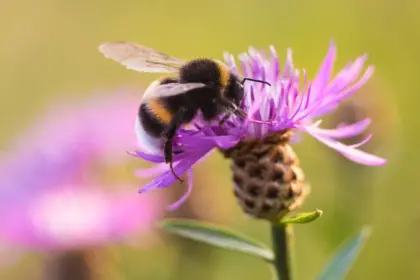In a blend of nostalgia and innovation, scientists from Hong Kong and China have transformed the familiar “drinking bird” toy into a pioneering clean energy generator. This quirky figurine, a staple in physics classes, has taken center stage in a groundbreaking study, revealing its potential in renewable energy production.
Published in the online journal Device, the research showcases how the “drinking bird” can tap into the power of water evaporation, converting it into a surprising amount of electricity. The study’s standout finding? This inventive setup can generate over 100 volts of electricity, showcasing a unique angle in the exploration of evaporation as a sustainable and safe energy source.
How Does It Work?
At its core, the process involves transforming heat energy into mechanical energy, leveraging the latent heat from water evaporation and the triboelectric effect. This effect happens when electric charges transfer between two objects as they touch or rub against each other. It’s a simple yet effective mechanism for generating power.
“The drinking bird triboelectric hydrovoltaic generator offers a unique means to power small electronics in ambient conditions, utilizing water as a readily available fuel source,” shared Professor Hao Wu from the South China University of Technology, who contributed to the study. He expressed both surprise and excitement at the tangible outcomes of their research.
A Familiar Figure with a New Role
The “drinking bird” isn’t just a toy, but an educational tool that demonstrates basic thermodynamic principles. It operates as a simplified heat engine, utilizing shifts in gravity and thermodynamic processes like evaporation and temperature changes to maintain its dipping and rising motion.
This capability to convert various energy forms into mechanical energy is precisely what the researchers tapped into, setting the stage for a sustainable energy solution.
The Bigger Picture
The potential for generating electricity through natural water evaporation is immense, matching roughly half the energy the Earth absorbs from sunlight. The study underscores that organic evaporation processes represent one of the most significant energy transfers on the planet.
The scientific community has long recognized the value of leveraging natural evaporation for power. Previous efforts and creative proposals, including one based on tree transpiration, from 2017, have sought to harness this vast energy source efficiently and renewably.
Looking Ahead
This study not only revives a classic physics class icon but also positions it as a key player in the quest for sustainable and innovative energy solutions. The “drinking bird,” once a simple demonstration tool, now stands at the forefront of a potentially transformative clean energy technology.
Moving forward, the team plans to design a specialized “drinking bird” for further experimentation, moving beyond the commercial toy model. “Additionally, we will explore various application opportunities for this device,” stated Professor Zuankai Wang from Hong Kong Polytechnic University, emphasizing the aim to develop “a practical product that can be used in our daily lives.”















